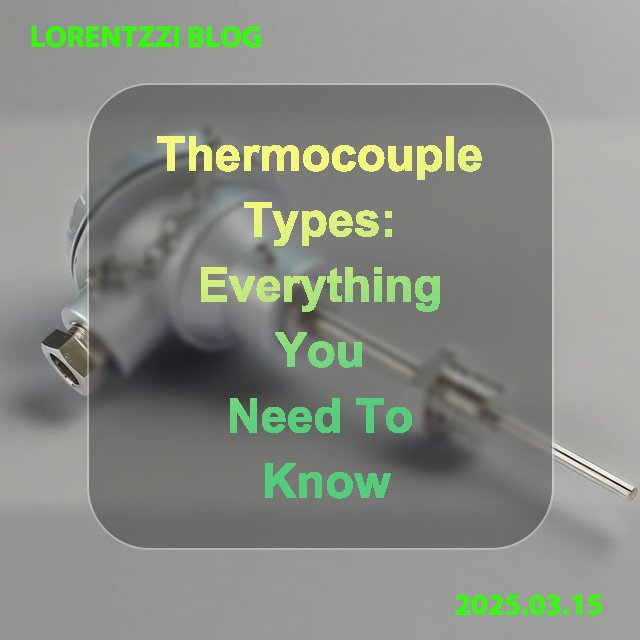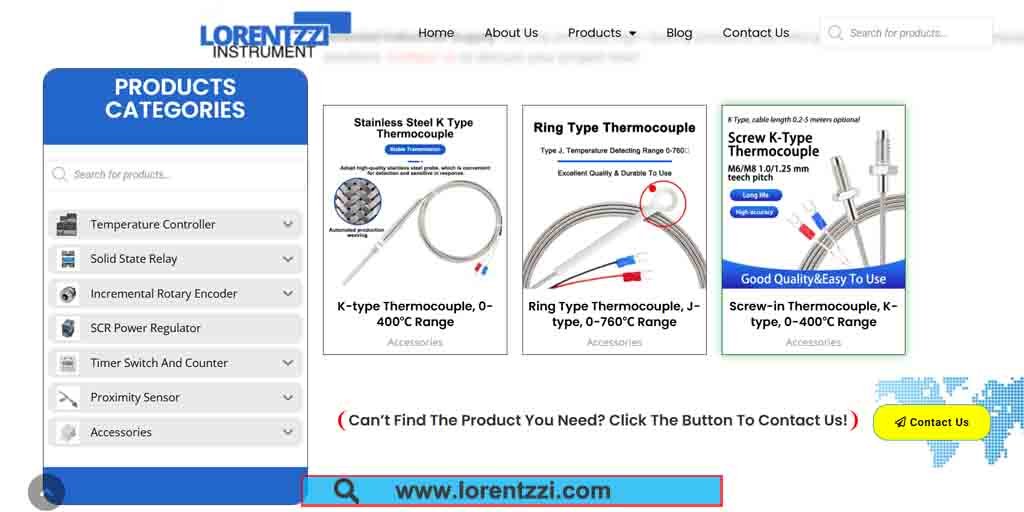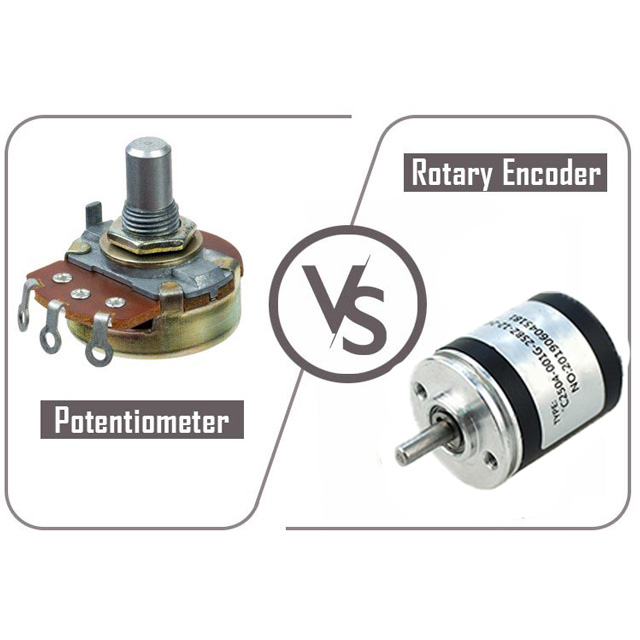A la hora de elegir un termopar, puede que le parezca que hay demasiados tipos de termopares disponibles en el mercado. ¿Sigue teniendo dudas sobre qué tipo es el mejor para su aplicación? En este artículo se enumeran todos los termopares y sus ventajas e inconvenientes. Empecemos.

El principio de funcionamiento de los termopares se basa en la efecto termoeléctrico (efecto Seebeck). Cuando dos conductores de diferentes materiales de un termopar forman un bucle cerrado y el extremo caliente y el extremo frío están a diferentes temperaturas, se generará una pequeña fuerza electromotriz ( llamada simplemente Emf ) en el bucle.
Existe una cierta relación entre esta fuerza termoeléctrica y la diferencia de temperatura. Midiendo la fuerza termoeléctrica y combinándola con las curvas temperatura-voltaje anteriores, se puede calcular la temperatura del objeto medido.
En términos generales, los termopares se pueden dividir en tipo K, tipo J, tipo E, tipo T, tipo N, tipo B, tipo S, tipo R, tipo C y tipo M. Los explicaremos uno a uno en los capítulos siguientes.
Termopar tipo K

El termopar de tipo K es el más utilizado de los 10 tipos de termopares.
Material: aleación de níquel-cromo (electrodo positivo) - aleación de níquel-silicio o níquel-aluminio (electrodo negativo)
Rango de medición de temperatura: -200℃ a +1300℃
Características: alta precisión, buena estabilidad, bajo precio y el más utilizado.
Escenarios de aplicación: hornos industriales, hornos de secado, procesamiento de alimentos, reactores químicos, etc.
Termopar tipo J
El termopar tipo J también es un sensor de temperatura muy utilizado, pero su rango de medición de temperatura es más estrecho que el del termopar tipo K, por lo que es más adecuado para entornos donde la temperatura no es demasiado alta.
Material: Hierro (electrodo positivo) - aleación de cobre y níquel (electrodo negativo)
Rango de medición de temperatura: -40℃ a +750℃
Características: bajo coste, alta sensibilidad, pero debido a que el hierro es el electrodo positivo, el rendimiento antioxidante es pobre.
Escenarios de aplicación: medición de baja temperatura, control de temperatura de hornos, medición de temperatura de soldadura, etc.
Termopar tipo E

Como se muestra en la figura anterior, la pendiente tensión/temperatura del termopar de tipo E es la mayor. Es decir, a la misma temperatura, el termopar de tipo E puede emitir la tensión más alta en comparación con los termopares de tipo K y J, y su cambio con la temperatura también es el mayor. Por lo tanto, la precisión de medición de temperatura del termopar tipo E es la más alta.
Material: níquel-cromo (electrodo positivo) - cobre-níquel (electrodo negativo)
Rango de temperatura: -200℃ a +900℃
Características: Alta sensibilidad, adecuado para 5 mediciones de alta precisión.
Escenarios de aplicación: Mediciones en el rango de temperaturas bajas a medias, como equipos de refrigeración y equipos de laboratorio.
Termopar tipo T

Como se muestra en la figura anterior, los termopares de tipo T tienen una buena linealidad en entornos de baja temperatura, por lo que los termopares de tipo T se utilizan principalmente para la detección de baja temperatura, como refrigeradores, cámaras frigoríficas, etc.
Material: Cobre (electrodo positivo) - Cobre níquel (electrodo negativo)
Rango de temperatura: -200℃ a +400℃
Características: Adecuado para la medición a baja temperatura, buen rendimiento antioxidante.
Escenario de aplicación: Medición de entornos de baja temperatura, como equipos de refrigeración, tanques de almacenamiento de gas licuado.
En la sección anterior se presentan los termopares metálicos baratos. En la siguiente sección, hablaremos de los termopares metálicos más caros, como el Tipo B, el Tipo S y el Tipo R. ¿Por qué son caros? Porque la composición de estos 3 termopares está hecha de aleación de platino y rodio.

A partir de las curvas de EMF frente a temperatura de los termopares de tipo B, S y R, es evidente que los tres tipos tienen una capacidad de medición de temperatura máxima extremadamente alta, que llega hasta casi 1800°C. Ahora bien, ¿cuáles son sus materiales, ventajas, desventajas y aplicaciones? Sigamos aprendiendo.
Termopar tipo N
Material: níquel-cromo-silicio (electrodo positivo) - níquel-silicio (electrodo negativo)
Rango de temperatura: -200℃ a +1300℃
Características: Mejor resistencia a la oxidación que el tipo K, adecuado para mediciones a alta temperatura.
Termopar tipo B, tipo R, tipo S
El electrodo positivo de un termopar tipo B es una aleación de platino y rodio (relación 70:30), y el electrodo negativo es una aleación de platino y rodio (relación 94:6).
Los electrodos positivos de los termopares tipo S y tipo R son de aleación de platino y rodio (relación 90:10) y de aleación de platino y rodio (relación 87:13), respectivamente, y los electrodos negativos son ambos de platino.
El rango de medición de temperatura del termopar tipo B es de 200℃-1800℃, por lo que no puede utilizarse para la detección de bajas temperaturas.
El rango de medición de temperatura de los tipos S y R es de -50℃-1700℃, que pueden utilizarse para la detección de baja temperatura, pero son más adecuados para hornos de alta temperatura, hornos de fundición, etc.
Termopares tipo C y tipo M

Los termopares de tipo C y M se utilizan raramente.
El electrodo positivo del termopar tipo C es de aleación de tungsteno y renio (relación 74:26), el electrodo negativo es de aleación de tungsteno y renio (relación 95:5), el rango de temperatura es de 0℃ a +2320℃, adecuado para la medición de temperaturas extremadamente altas, pero caro.
El electrodo positivo del termopar tipo M es de aleación de platino-cobalto (relación 70:30), el electrodo negativo es de aleación de platino-cobalto (relación 94:6), el rango de temperatura es de -50℃ a +1800℃.
Conclusión
En resumen, los distintos tipos de termopares tienen sus propias ventajas e inconvenientes. Los termopares de tipo J y K son los más utilizados en la medición de temperatura.
En Lorentzzi®, no sólo proporcionamos controladores de temperaturasino también termopares de alta calidad. Si tiene preguntas técnicas o desea obtener un presupuesto, por favor Contacto ¡Ahora!










